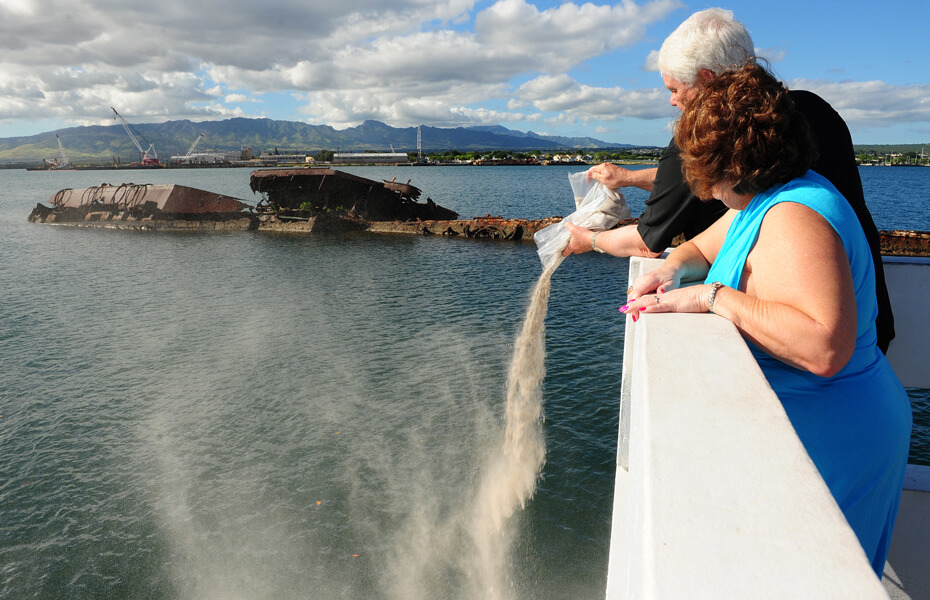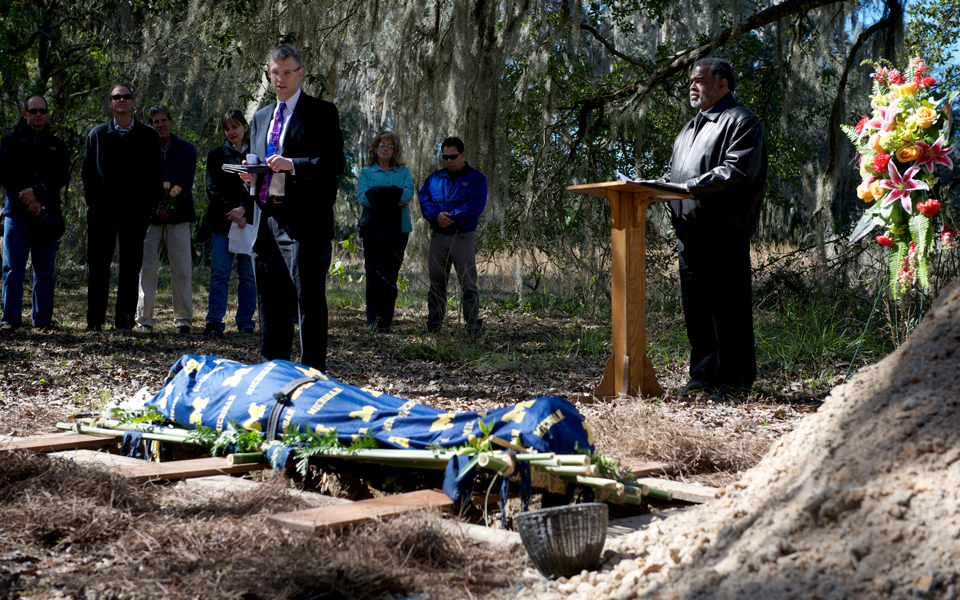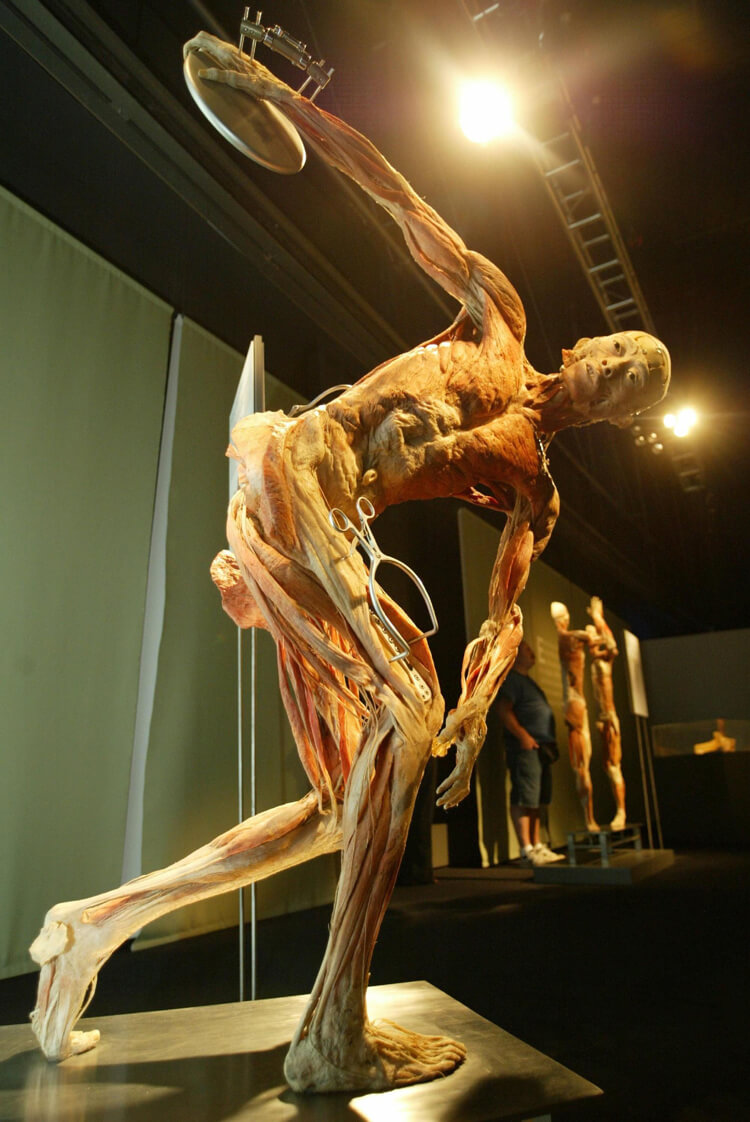Death has always been a fact of life. But somehow, even after endless repetitions of the cycle, we still haven’t figured out how we feel about dead bodies. Are they vessels of loved ones that should be preserved for as long as possible? Bundles of organic material that should be reunited with the earth? Harsh reminders of our own mortality that should be disposed of quickly and thoroughly?
Ellen Stroud, an environmental historian at Penn State University, explored the macabre history and legal ambiguities of American bodies in the Annual Review of Law and Social Science. From the one-footed 87-year-old man sold to a medical school for $10 in 1902 to the plasticized people put on display in traveling exhibits today, bodies continue to challenge our ideas of justice and humanity.
Knowable spoke with Stroud about her fascination with corpses, modern examples of the legal limbo surrounding dead people and her plans for her own body when she’s done with it. This conversation has been edited for length and clarity.
Why are you so interested in dead bodies?
I think everybody finds bodies fascinating. But I’m coming at this mainly from my preoccupation with ecological systems; I’ve also studied the history of forests in the Northeast. I like thinking about how our bodies interact with natural environments — when we’re living and when we’re dead. It’s a fun puzzle as long as it remains somewhat abstract. But there are so many ideas and emotions that our bodies symbolize. It becomes very messy, and I’m trying to understand the messiness.
How do people react to your research topic?
It’s unpredictable. If I’m chatting with someone on an airplane, I’m more likely to mention my work on forests than dead bodies, just to be safe. When people find out about my research topic, they tend to share weird family stories. One was from a college friend of mine, whose grandfather had passed away in a hospital in the Boston area. The family wanted to bring the body home to prepare it for burial, but the hospital said no. But there were no laws or even rules against it. Eventually, the hospital relented and the family took the body home. The grandfather spent the night in the back of a pickup covered with a tarp.
I tend to be a little irreverent when I talk about bodies. Humor can sometimes defuse the discomfort conjured by a corpse; the laughter isn’t intended as disrespect but as distancing, a way of keeping more macabre thoughts at bay.
But I’ve learned to be careful with my tone. At a recent seminar, I was telling the story of a neighbor in Philadelphia. While excavating her basement, workers found coffins of a dozen or so young children, which turned out to be a couple of centuries old. Houses in big cities are often built on forgotten burial grounds. I joked that even though her neighbors now call it the “dead baby house,” hers is the only house on the street positively known to have no bodies in it because archeologists removed those coffins. Her neighbors just haven’t found theirs yet. Some people laughed, but a graduate student had a really good question that brought me up short: Would we laugh if we knew the children’s names? When the topic becomes personal, it becomes much more difficult.
You write that the legal system has had trouble grappling with the meanings of dead bodies. What are some recent examples?
People are frequently flabbergasted to learn what is lawful when it comes to bodies. In September, a woman in North Carolina was arrested after she kept her 93-year-old mother’s body in her home, reportedly because she wanted to watch her mother decompose. She was charged with “concealing a death,” not with keeping a body. If she had reported the death, she might have been able to legally hold onto her mother for a while. As a practical matter, she probably wouldn’t have been able to live with the body for very long, but it’s not clear that she would have been violating any specific law.
When you read something upsetting like that, it’s easy to assume that it must be against the law. But when it comes to dead bodies, laws often don’t exist until someone transgresses a norm. People might not even realize that there is a norm until someone crosses what they see as a line.
“When it comes to dead bodies, laws often don’t exist until someone transgresses a norm.”
Ellen StroudIn 2009, a man in Stevenson, Alabama, buried his wife in his front yard, with a headstone and everything. He said it was her dying wish to stay home. The neighbors complained and the city sued, but there were no state or local laws against burying a body in his front yard. In fact, only a few states have explicit laws against burials on private property. The state Supreme Court ruled against him in 2013, and a work crew used heavy equipment to remove the casket, which was encased in a concrete vault. The remains were cremated, and the headstone was left in place. The site looked the same as it did before, but it was important to his neighbors to know that the body was gone.
I find it interesting that people aren’t outraged or even surprised to hear about a neighbor burying a German shepherd in the backyard, even though a German shepherd can practically be as big as a person. But a person in the front yard: That’s not OK.
Bodies are far more likely to be cremated today than they were in past generations. How does cremation change the environmental impact?
Many people assume that cremation is “greener” than burial, but the question is more complicated than it may seem at first. People imagine that once you’re cremated, you’re not a pollutant at all, that the heat has somehow purified everything. But bodies today may have mercury fillings in teeth, silicone in breasts or titanium rods in legs. And many people are cremated in a coffin, so their ashes contain remains of upholstery and everything else.

The ashes of WW2 veteran Robert C. Knight are scattered in an official ceremony in 2014. Ashes of countless others, in countless spots across the USA, are privately scattered. Though there are laws around the practice, “nobody pays the slightest bit of attention,” says Ellen Stroud.
CREDIT: PHOTO BY PETTY OFFICER 2ND CLASS TIARRA FULGHAM / WIKIMEDIA COMMONS
In presentations, I often show slides of the Mount Auburn cemetery near Boston and a large crematorium in Manhattan. I ask people: Which one would you rather live next to? The answer is pretty clear. When you look down at a big city from a plane, you see that cemeteries are some the largest stretches of open space. In a way, people are using their bodies to keep land open, and one could argue that’s a good use.
Is there any more legal clarity around ashes than bodies?
There are some laws against dispersal of ashes, but nobody pays the slightest bit of attention. People spread them wherever they want to.
Beyond environmental impact, what are some of the other consequences of spreading ashes?
It can cause some awkward situations. When the new Yankee Stadium opened in 2009, a lot of people were upset because they had surreptitiously spread ashes of loved ones at the old Yankee Stadium. The team responded by moving a small amount of dirt from the old stadium to the new one. That sense of continuity helped ease concerns.
What is the “greenest” way to dispose of a body?
It really depends on what part of the process one is thinking about. Ed Abbey famously said he wanted to be eaten by vultures, but I doubt my body would be very healthy vulture food given what I’ve put into it over the years. Burial at sea is appealing in many respects, but it’s important to weight a body down so that it stays underwater, and then I have questions about how one would or would not decompose and the environmental implications of that.

Wrapped in a cotton shroud, Joseph Fitzgerald is laid to rest in 2013 at the Prairie Creek Conservation Cemetery in Gainesville, Florida. “Green” burials like this are becoming increasingly popular.
CREDIT: REUTERS / STEVE JOHNSON
There are outfits that will use your body as part of an artificial coral reef or compress your ashes into an artificial gem, or artist Jae Rhim Lee can sell you a mushroom suit to turn you into compost.
But if you’re looking for a more mainstream green option, the green burial movement is likely the way to go. Many cemeteries these days have sections set aside for burials without embalming, without concrete vaults, where biodegradable caskets or even just shrouds are used. There are even a number of places now (for example, Prairie Creek Conservation Cemetery in Florida) where land conservation is an explicit part of their mission.
You’ve written that, historically, the treatment of bodies often depends on social status. Is that still the case?
Absolutely. Consider Bodies: The Exhibition, a traveling exhibit of corpses preserved in resin. The exhibit uses unclaimed bodies from China, and critics say that some may have been unjustly executed prisoners. Whether that’s true or not, there’s nothing illegal in the US about selling tickets for a show featuring the bodies of victims of atrocities.

Bodies: The Exhibition uses preserved and dissected corpses from China, and critics say that some may be of executed prisoners. Ellen Stroud notes that US laws around handling dead bodies are sparse, and so even if that were the case, it would not be against the law to put on such a show and charge admission to view it.
CREDIT: WENN LTD / ALAMY STOCK PHOTO
I’ve written about an area of southeast Arkansas. Within a few miles, there’s a Native American burial mound, a white family’s private graveyard, a town cemetery and the cemetery from a Japanese internment camp, and each site is subject to different rules. The burial mound is deteriorating from neglect, but the family graveyard and town cemetery are well-kept. The internment camp grave markers have only recently become part of a larger commemorative site. And on the same property as the white family’s private burial ground, there are African-American burials that are not marked. As Americans, we have a brutal history of treating some groups of people as things. That has happened with living people, and it happens with dead bodies, too.
What do you want to happen with your body?
On an ecological level, how I dispose of my body isn’t going to be as important as how I dispose of my Volkswagen. But I’ve put way more thought into what I’m going to do with my body than with my car. I keep trying to get to the place where I can think of myself as a thing. I like to joke — but I don’t think I’m joking, really — that I could always donate my body to a forensic anthropology research center that tests how bodies decompose. They might throw you into a puddle or put you out in the desert for a few weeks. If you live close enough, they’ll even pick you up for free. It’s very economical.
It’s odd. I wouldn’t mind that for myself, but I didn’t want to do anything like that with my father’s body. And I don’t entirely understand why.




